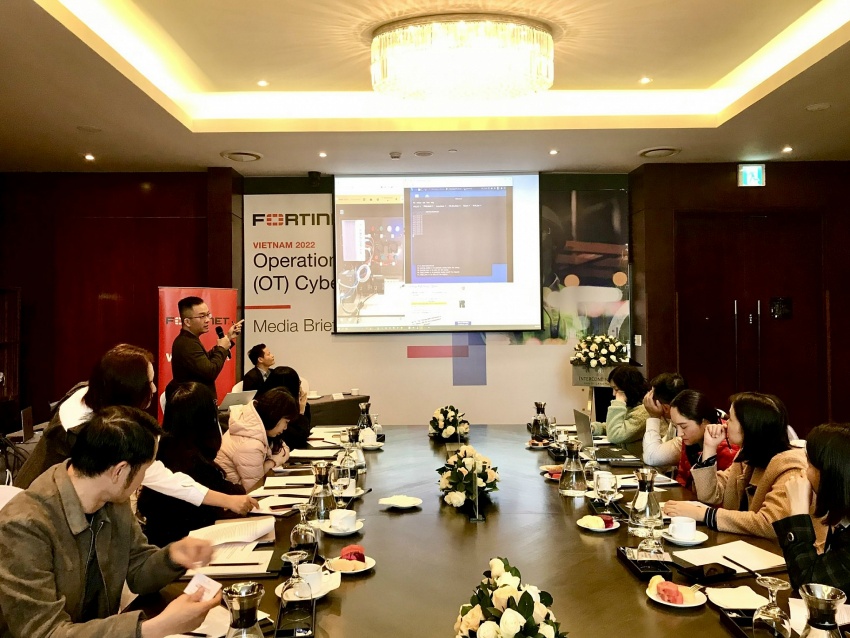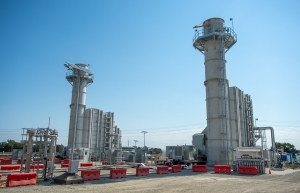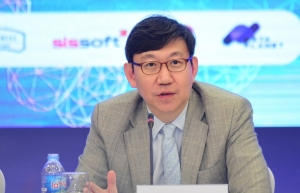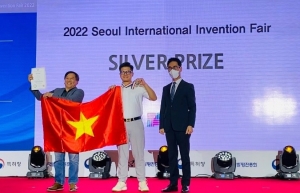Fortinet launches State of Operational Technology and Cybersecurity Report
With the IT threat landscape becoming more sophisticated, OT systems have also become vulnerable to these growing threats. This year’s report is based on a March survey of more than 500 global OT professionals, including about 50 representatives from Vietnam.
The survey targeted people holding leadership positions responsible for OT and OT security, from managers to lower-level executives. Respondents represent a range of industries that are heavy users of OT, including manufacturing, transportation and logistics, and healthcare.
The event received active participation and response from individuals, experts, and representatives of companies and media agencies interested in the issue.
The conference aims to give a comprehensive overview of surveyed enterprises’ ability to control OT activities; the impact of OT security intrusions on organisations’ productivity and bottom line. Experts also pointed out that gaps in OT security still exist in organisations and shared some solutions to overcome OT security challenges.
Vu Anh Tien, industry principal at the Cybersecurity team of Frost & Sullivan, cited the Fortinet report that 93 per cent of surveyed OT organisations experienced at least one intrusion in the past 12 months, with the figure for Vietnam at 96 per cent. The top three intrusion types in Vietnam were hackers, malware, and phishing email.
As a result of these intrusions, nearly 50 per cent (60 per cent in Vietnam) of organisations suffered an operation outage that affected productivity, with 90 per cent of intrusions requiring hours or longer to restore service, while 92 per cent of Vietnam OT organisations took up to a few hours to return to service. Additionally, one-third of global respondents saw revenue, data loss, compliance, and brand value impacted due to such security intrusions.
Tien pointed out some key difficulties for OT security, such as limitations on OT devices and solutions and the lack of professionals who can manage both IT and OT environments. The difference in priorities and mindsets between IT and OT experts is also considered an obstacle.
Fortinet's report showed that OT security ownership is inconsistent across organisations. In particular, most OT security management was assigned to directors or managers such as the director of plant operations and manager of manufacturing operations. Only 15 per cent of survey respondents said that their organisation had a chief information security officer (CISO) responsible for OT security.
 |
Nguyen Minh Hai, a security consultant at Fortinet Vietnam, outlined some solutions for organisations to address their OT security challenges. Fortinet’s report indicated ways organisations could respond to OT systems’ vulnerabilities and strengthen their overall security posture, such as establishing Zero Trust Access to prevent breaches and implementing solutions that provide centralized visibility of OT activities. Consolidating security tools and vendors to integrate across environments; deploying network access control technology were also suggested as solutions.
Nguyen Gia Duc, country manager at Fortinet Vietnam, said, “From the survey, Fortinet understands the most important functions when Vietnam OT organisations evaluate and select security solutions. Hence, we've been engaging our customers regarding the value of built-in security controls that are baked into the product and offer an ecosystem OT security approach based on our Security Fabric to best address OT systems’ vulnerabilities and strengthen their overall security posture.”
As OT systems increasingly become targets for cybercriminals, leaders are recognising the importance of securing environments to mitigate risk.
Industrial systems have become a significant risk factor. Previously these environments were air-gapped from IT and corporate networks, but currently, these two infrastructures, OT and IT, are more and more integrated.
Industrial systems are now connected to the internet and more accessible from anywhere, causing attacks on organisations to increase considerably worldwide, with Vietnam no exception.
 | Boosting Vietnam's grid stability through gas turbine technology As COP27 kicked off and delegates from around the world met in Egypt this month, it is a pivotal moment for global action on climate change. |
 | Opportunities explored for tech cooperation between Vietnam and South Korea At 'Technological Investment Cooperation between Vietnam and South Korea' on November 29, speakers gave in-depth opinions on the legal context of blockchain in Vietnam and shared useful advice for startups and investors who are interested and intend to invest in Vietnam. |
 | Abbott’s technology breakthroughs help shape future diabetes care On World Diabetes day on November 14, the World Health Organization (WHO) organised a global expert discussion forum under the Global Diabetes Compact initiative to galvanise efforts around the world in addressing the global challenges of the disease. |
 | Nam Cau Kien Industrial Park honoured at international innovation exhibition Nam Cau Kien Industrial Park recently received a host of awards at the International Exhibition of Science and Technology Innovation held in Seoul, South Korea on November 15. |
 | 5G to become leading technology in Southeast Asia Global 5G subscriptions remain on track to top one billion by the end of this year, and five billion by the end of 2028, despite current and developing economic challenges in many parts of the world, according to the November 2022 edition of the Ericsson Mobility Report. |
What the stars mean:
★ Poor ★ ★ Promising ★★★ Good ★★★★ Very good ★★★★★ Exceptional
Related Contents
Latest News
More News
- TECHFEST Vietnam 2025 links startups with policy and capital (December 15, 2025 | 18:21)
- MST to allocate $3.8 billion for sci-tech in 2026 (December 15, 2025 | 18:10)
- Long Thanh International Airport welcomes first Vietnam Airlines test flight (December 15, 2025 | 18:01)
- Health Innovation Hub: accelerating health equity through digital healthcare innovation (December 15, 2025 | 08:00)
- Vietnam’s first AI Law to take effect from March 2026 (December 12, 2025 | 09:00)
- Chi Communications joins SEA CAN alliance (December 11, 2025 | 17:39)
- New Law on High Technology sets incentives and safeguards (December 11, 2025 | 09:00)
- IBTE 2025 to return to Ho Chi Minh City this December (December 11, 2025 | 09:00)
- Masan posts steady gains as Vietnam targets stronger retail growth (December 10, 2025 | 18:58)
- Seafood exports to Japan surge towards new annual record (December 10, 2025 | 18:50)

 Tag:
Tag:






















 Mobile Version
Mobile Version